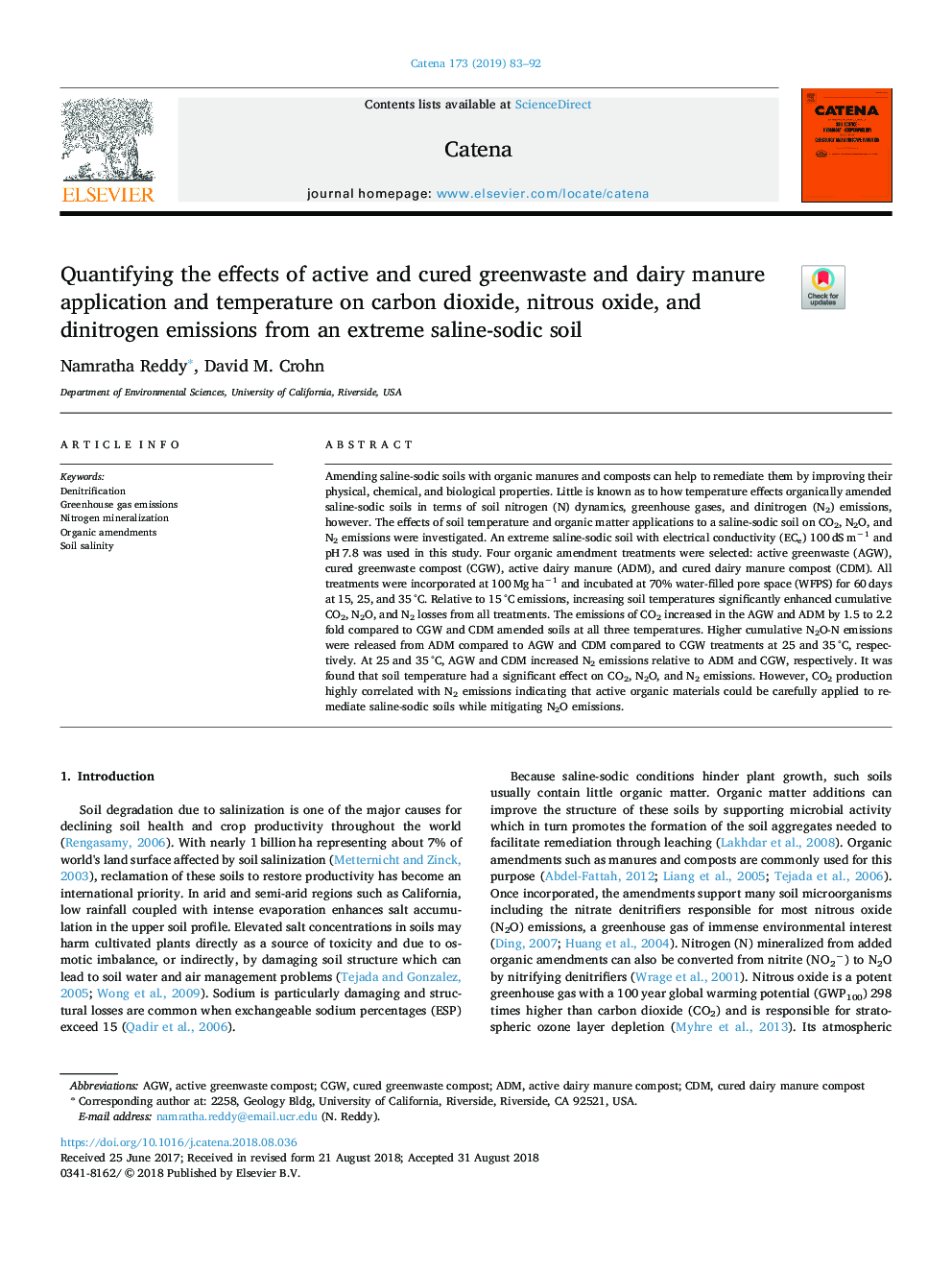| Article ID | Journal | Published Year | Pages | File Type |
|---|---|---|---|---|
| 11012960 | CATENA | 2019 | 10 Pages |
Abstract
Amending saline-sodic soils with organic manures and composts can help to remediate them by improving their physical, chemical, and biological properties. Little is known as to how temperature effects organically amended saline-sodic soils in terms of soil nitrogen (N) dynamics, greenhouse gases, and dinitrogen (N2) emissions, however. The effects of soil temperature and organic matter applications to a saline-sodic soil on CO2, N2O, and N2 emissions were investigated. An extreme saline-sodic soil with electrical conductivity (ECe) 100â¯dSâ¯mâ1 and pHâ¯7.8 was used in this study. Four organic amendment treatments were selected: active greenwaste (AGW), cured greenwaste compost (CGW), active dairy manure (ADM), and cured dairy manure compost (CDM). All treatments were incorporated at 100â¯Mgâ¯haâ1 and incubated at 70% water-filled pore space (WFPS) for 60â¯days at 15, 25, and 35â¯Â°C. Relative to 15â¯Â°C emissions, increasing soil temperatures significantly enhanced cumulative CO2, N2O, and N2 losses from all treatments. The emissions of CO2 increased in the AGW and ADM by 1.5 to 2.2 fold compared to CGW and CDM amended soils at all three temperatures. Higher cumulative N2O-N emissions were released from ADM compared to AGW and CDM compared to CGW treatments at 25 and 35â¯Â°C, respectively. At 25 and 35â¯Â°C, AGW and CDM increased N2 emissions relative to ADM and CGW, respectively. It was found that soil temperature had a significant effect on CO2, N2O, and N2 emissions. However, CO2 production highly correlated with N2 emissions indicating that active organic materials could be carefully applied to remediate saline-sodic soils while mitigating N2O emissions.
Keywords
Related Topics
Physical Sciences and Engineering
Earth and Planetary Sciences
Earth-Surface Processes
Authors
Namratha Reddy, David M. Crohn,
